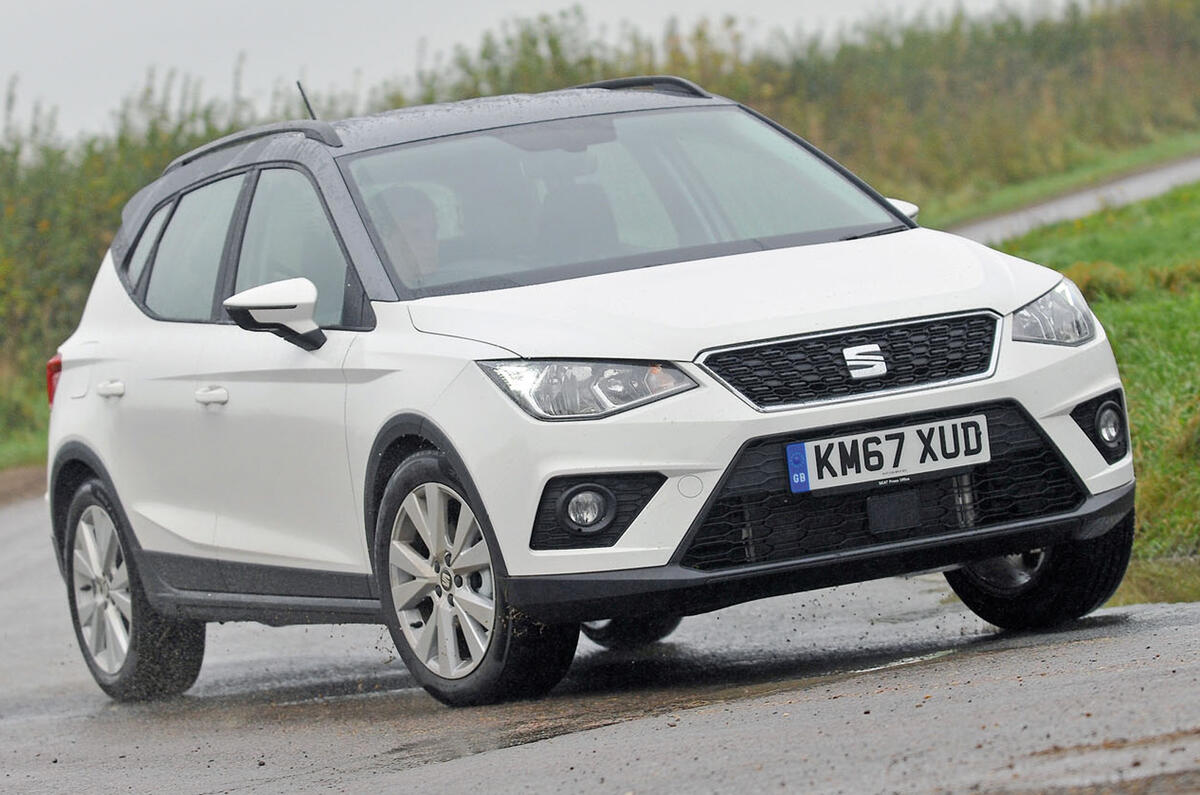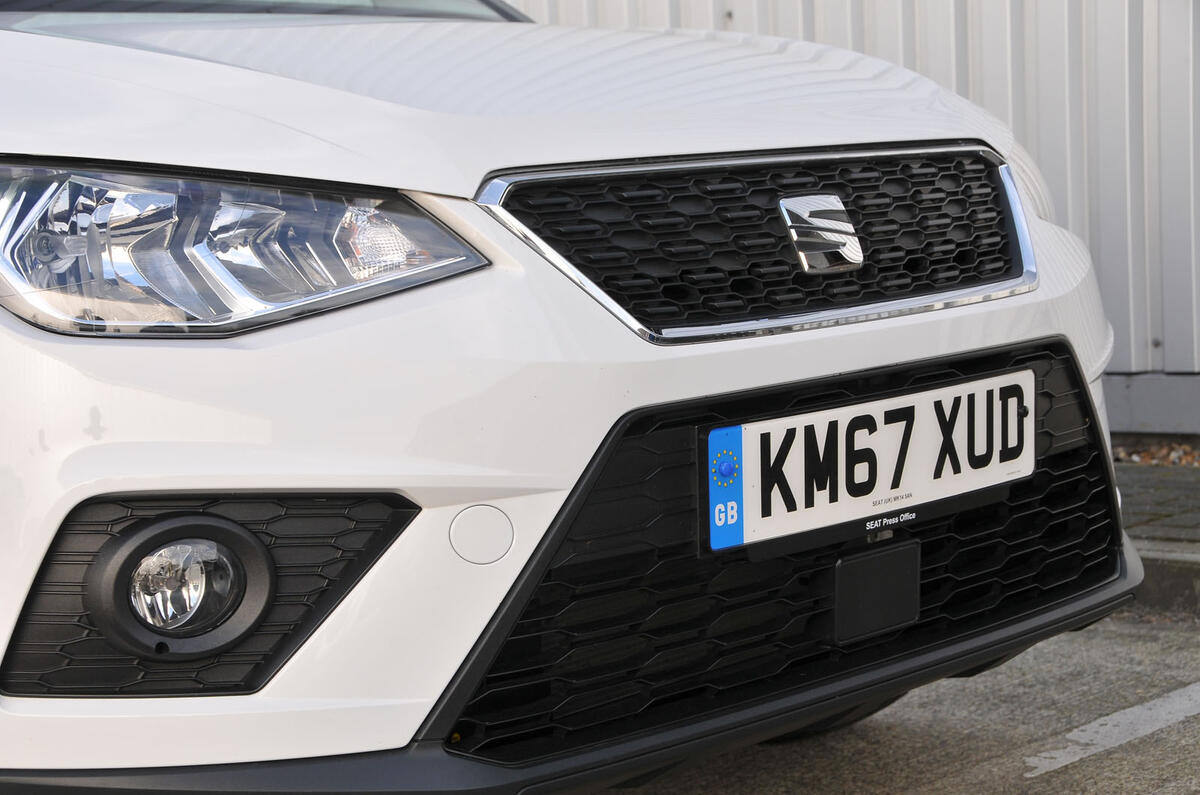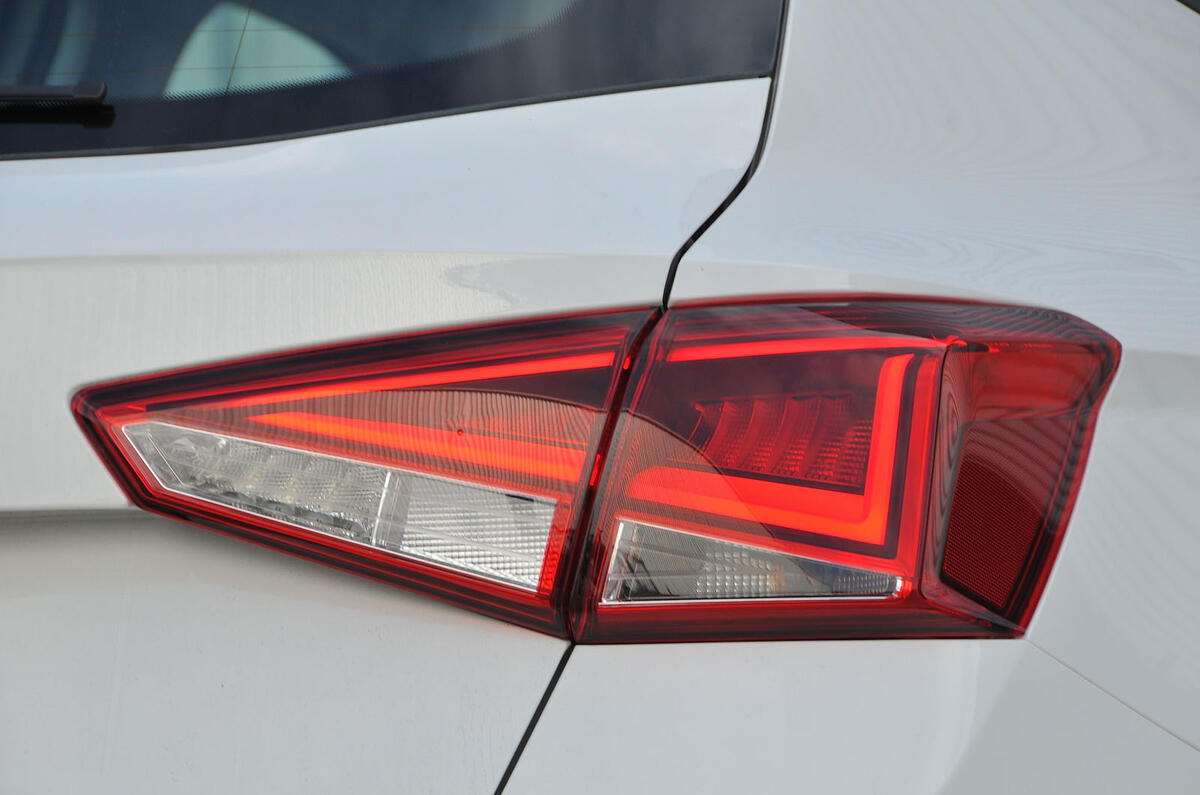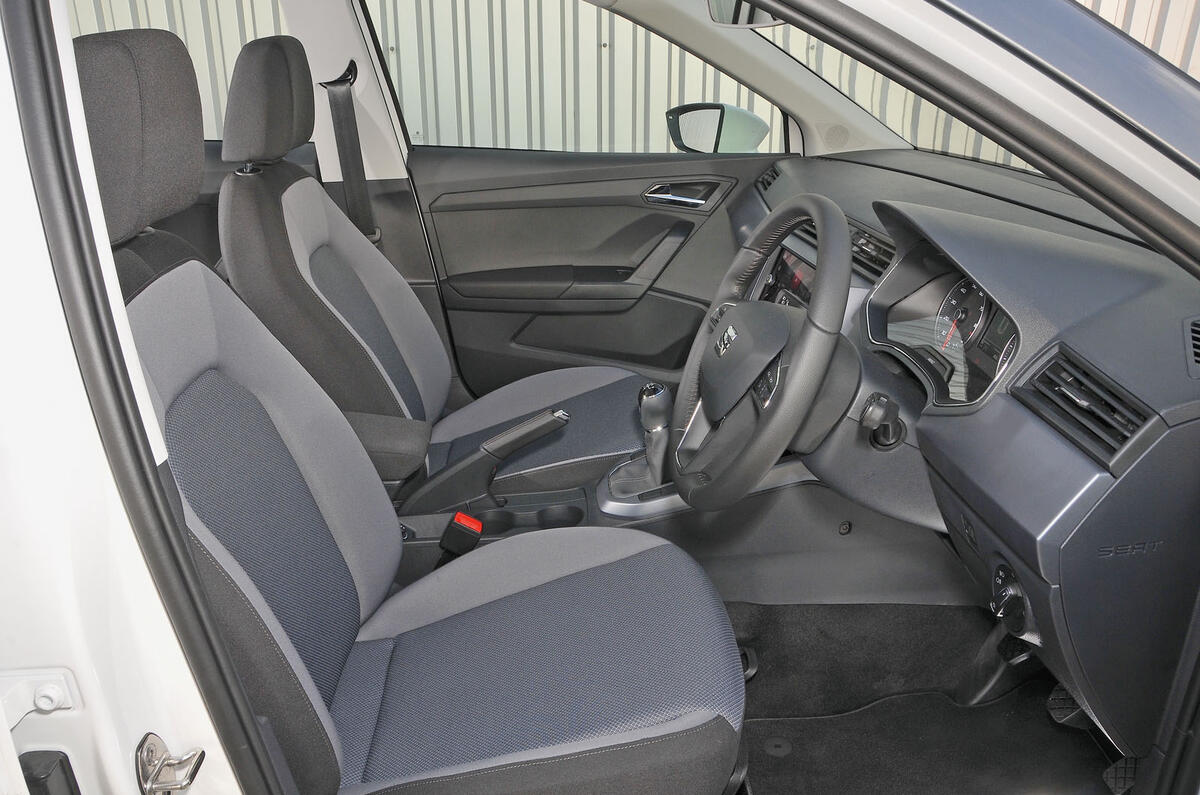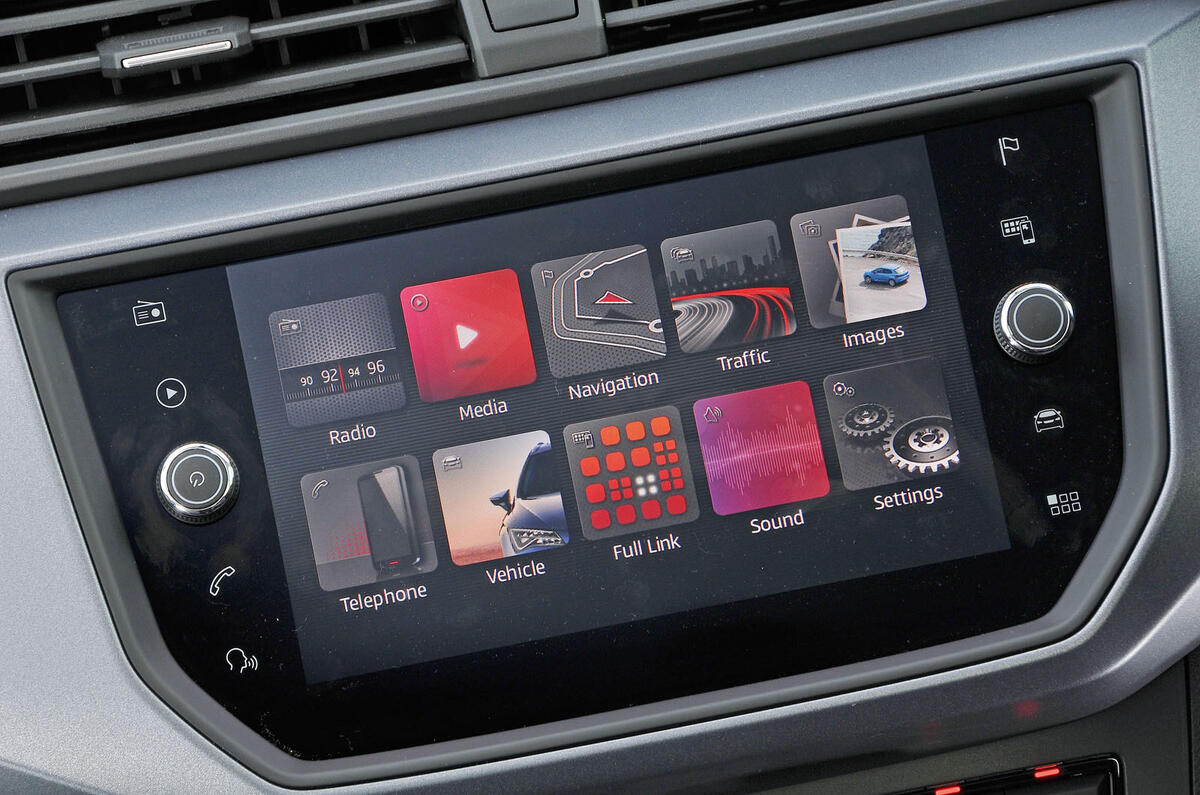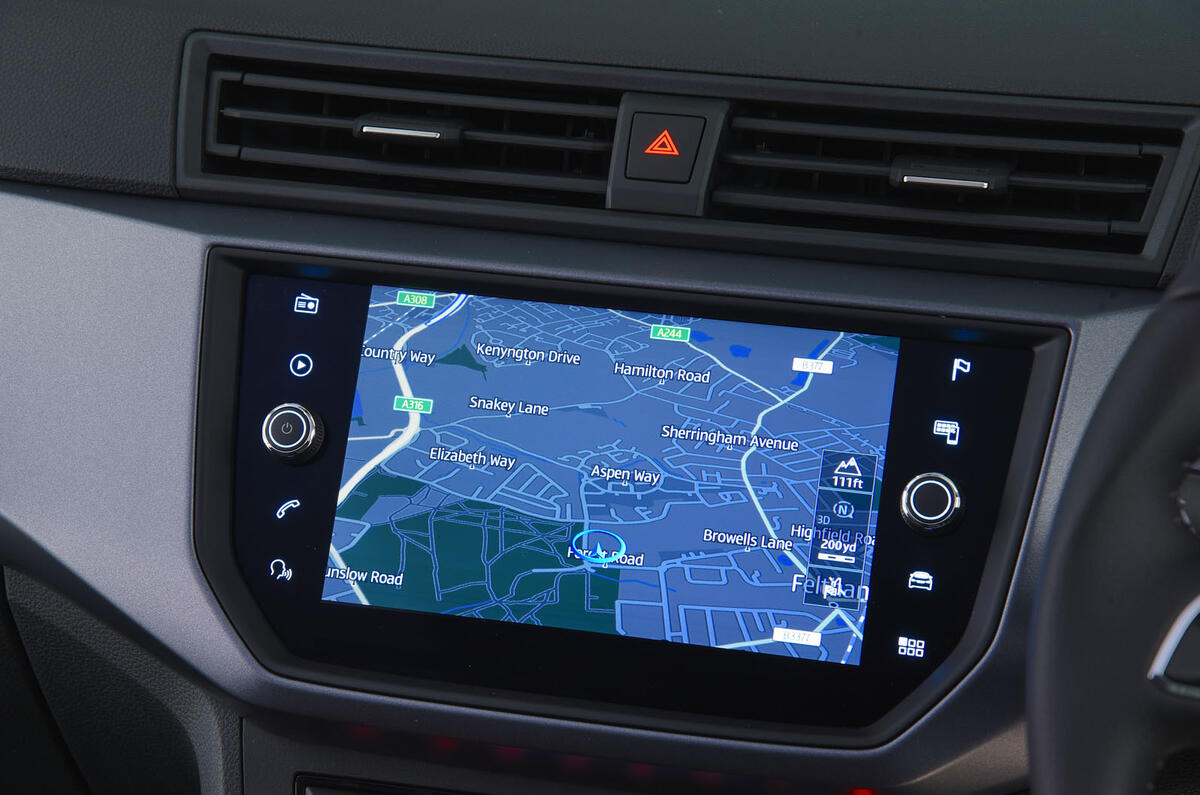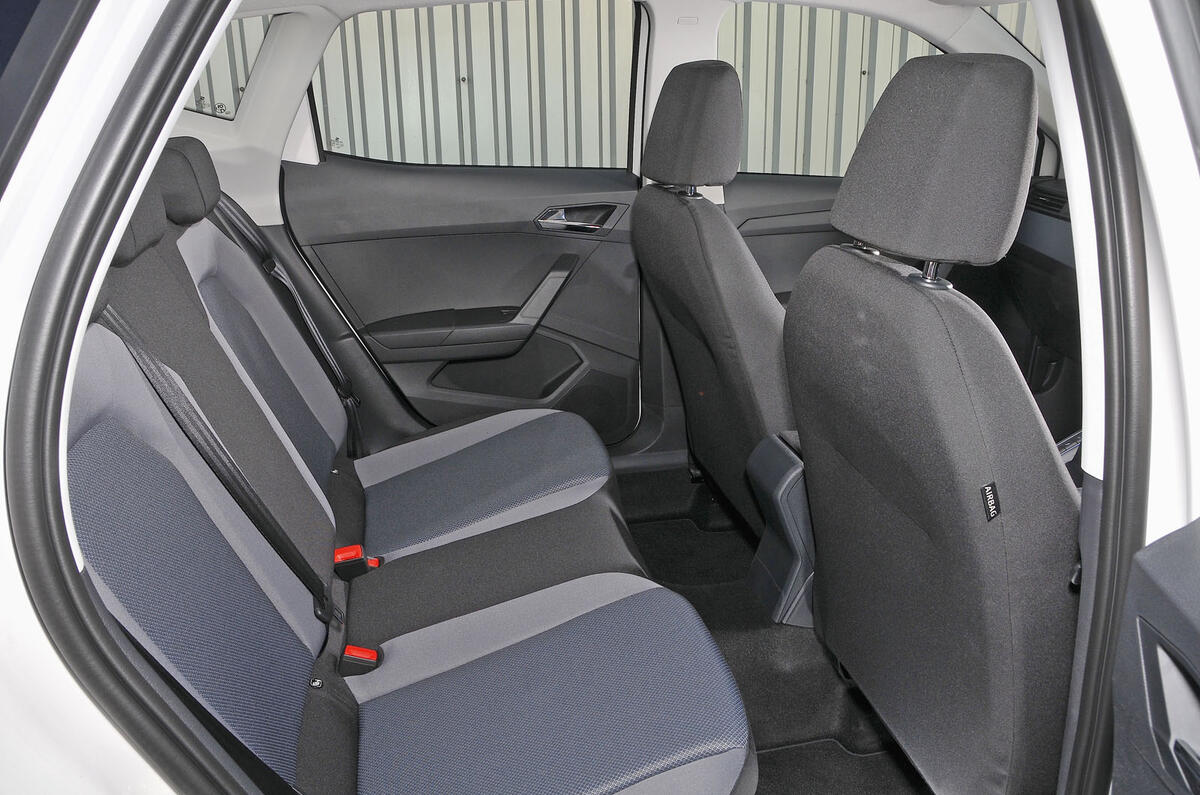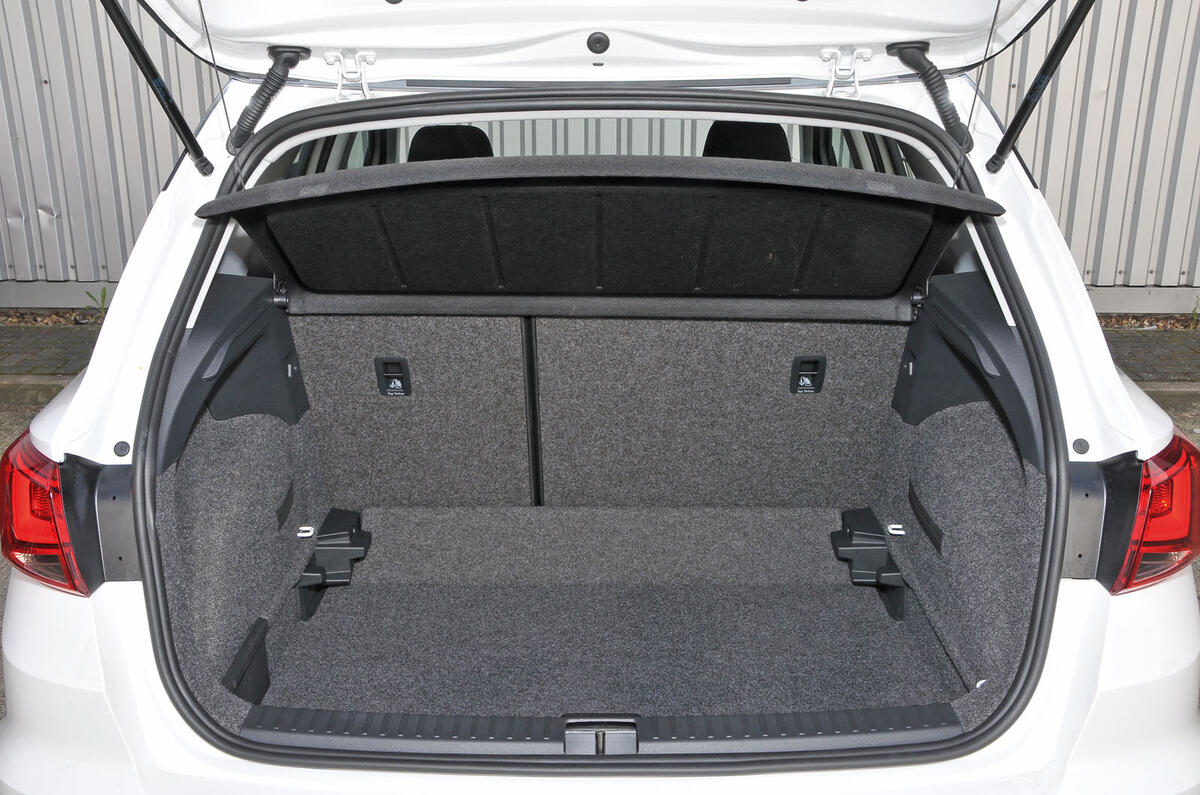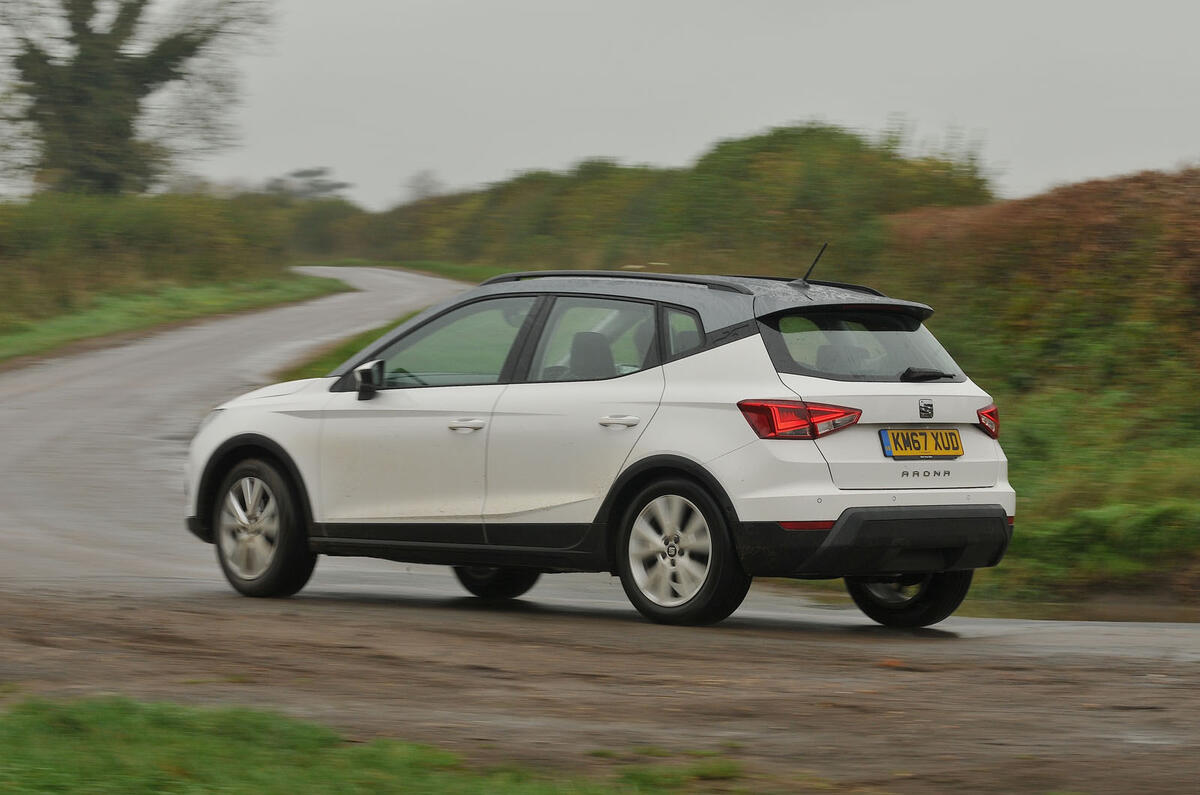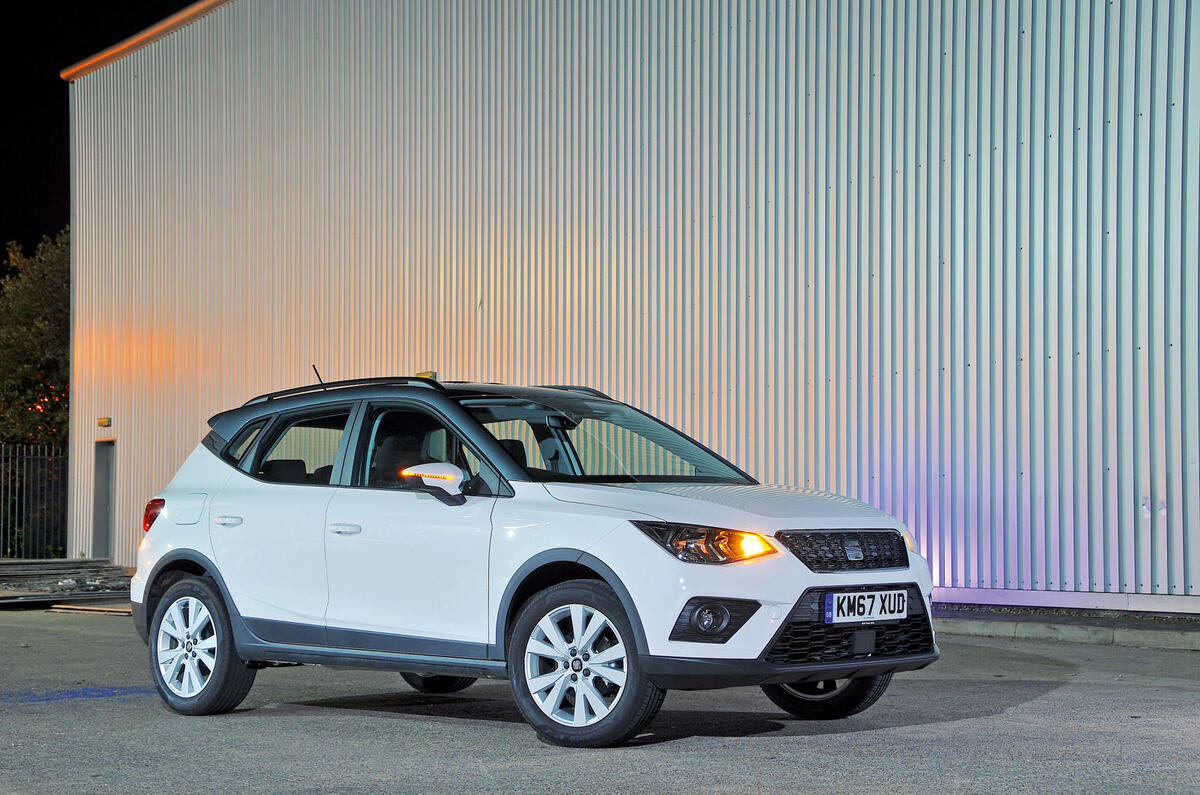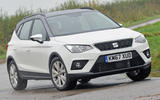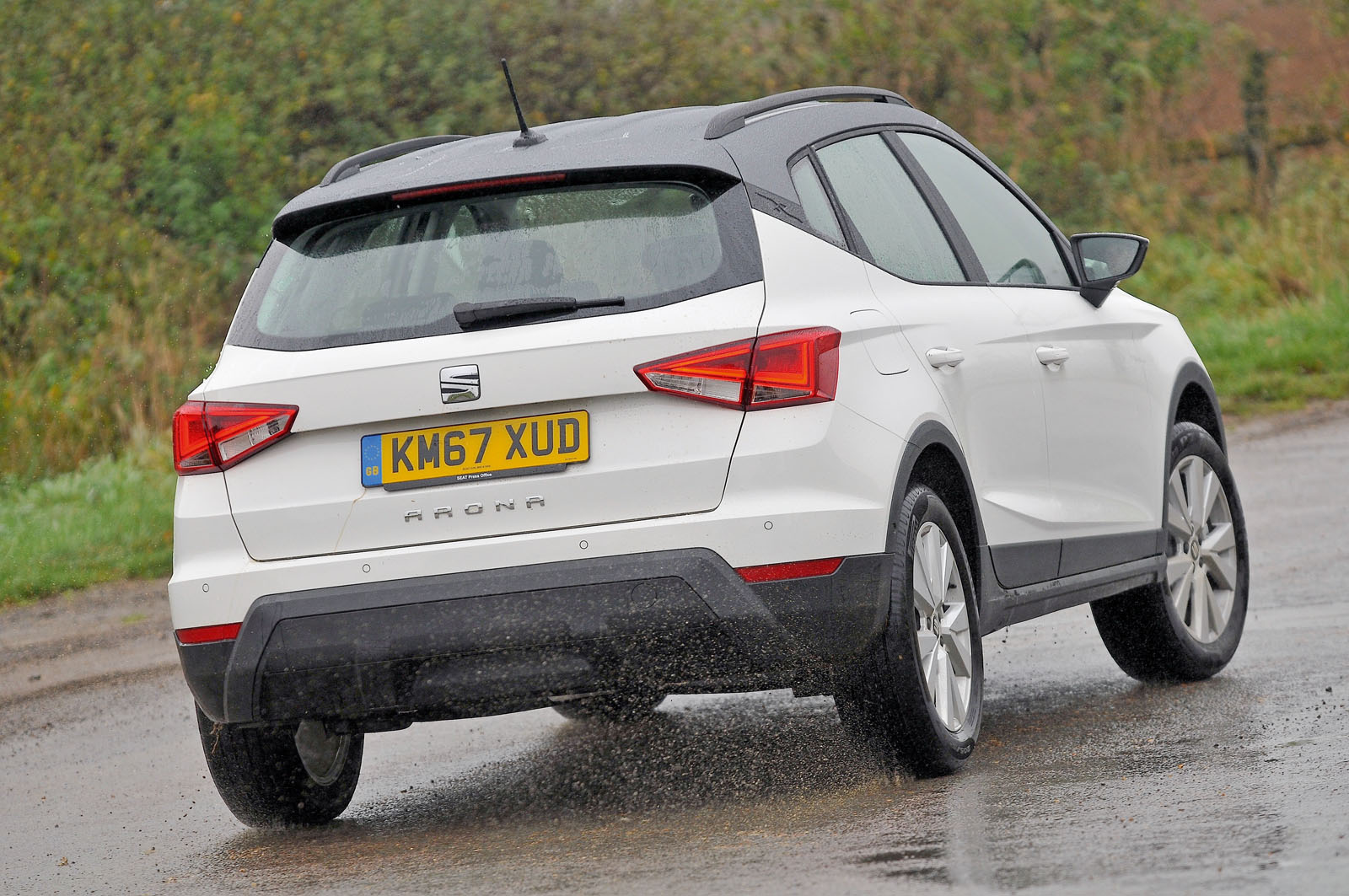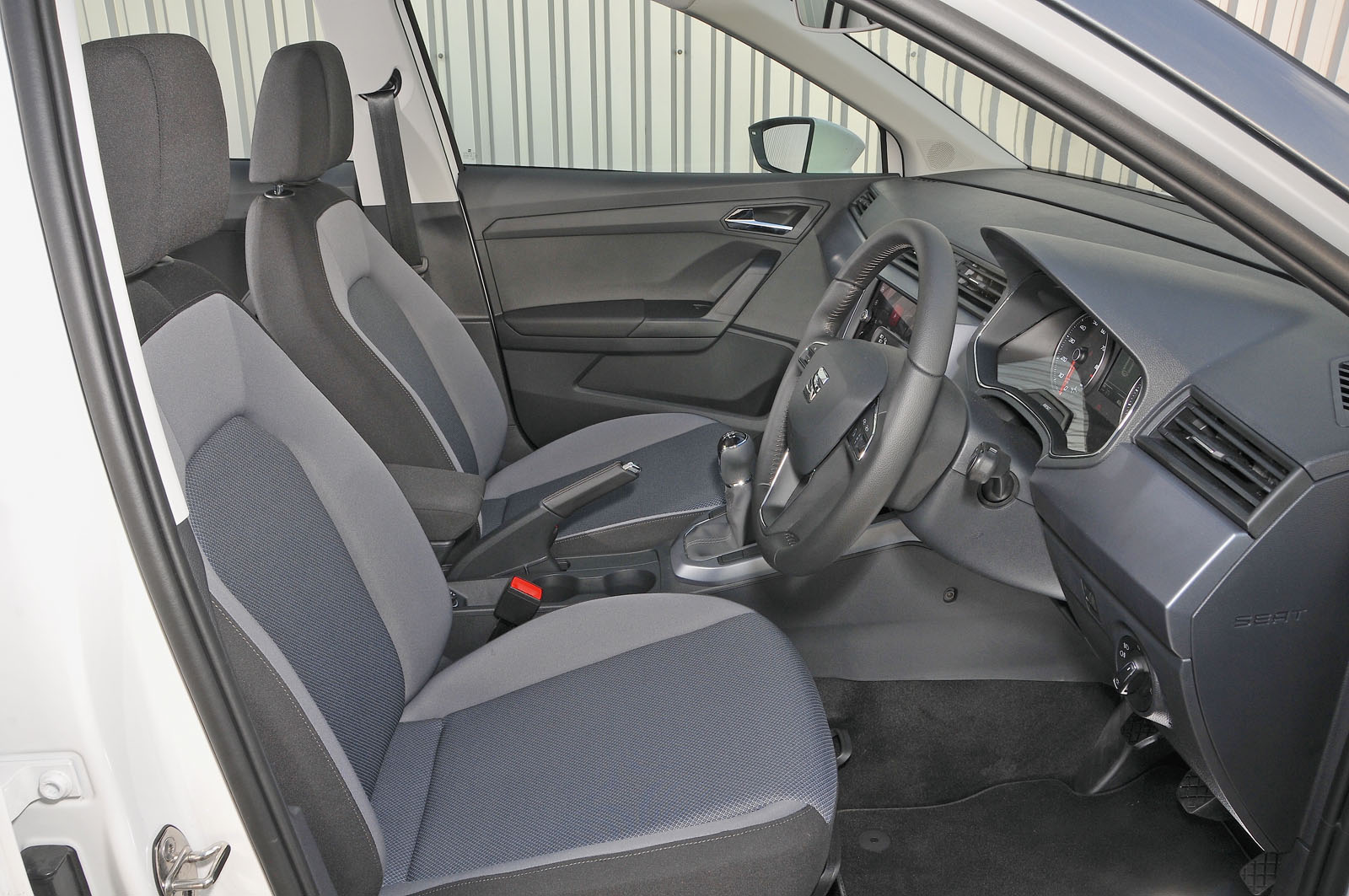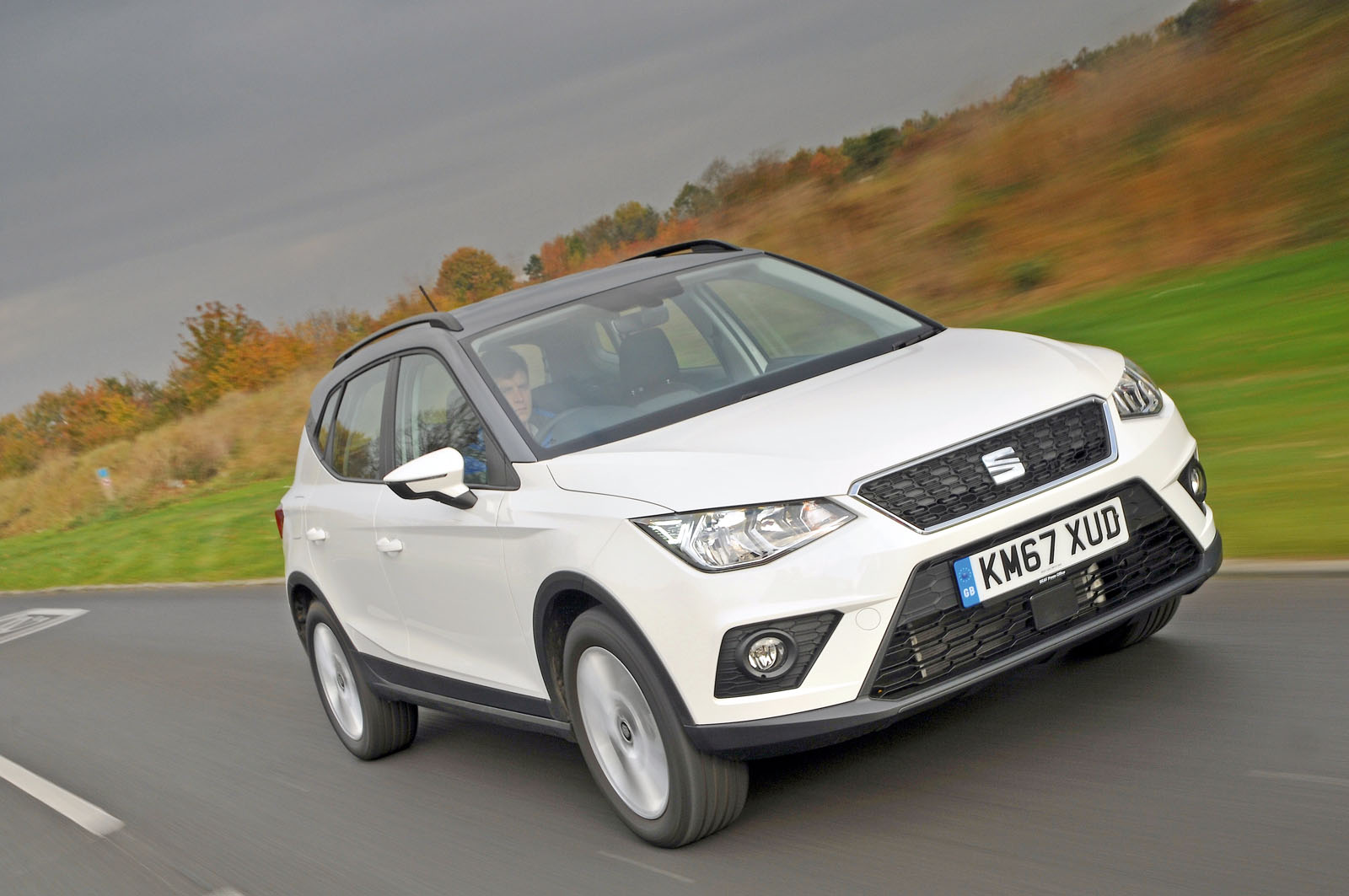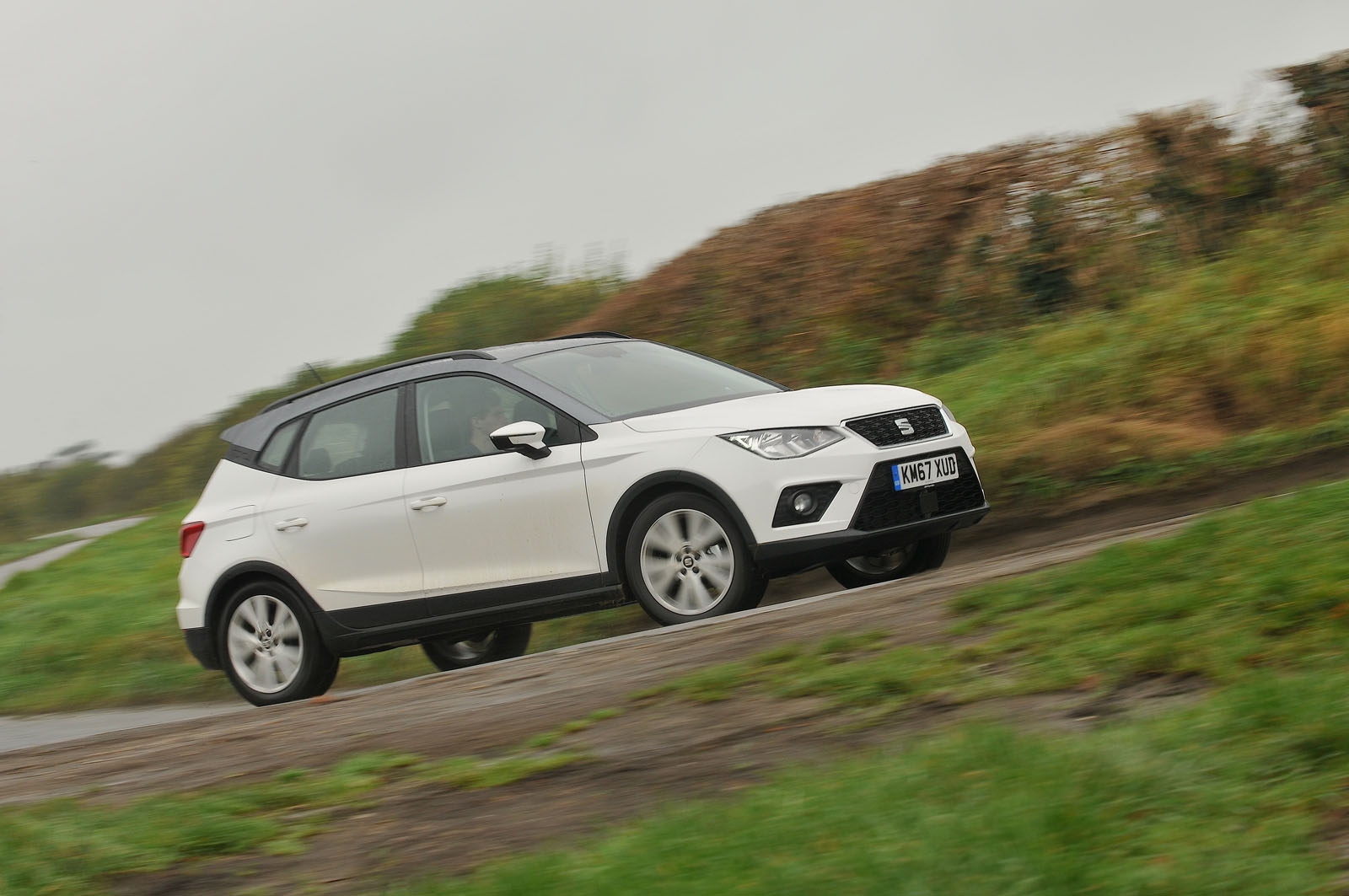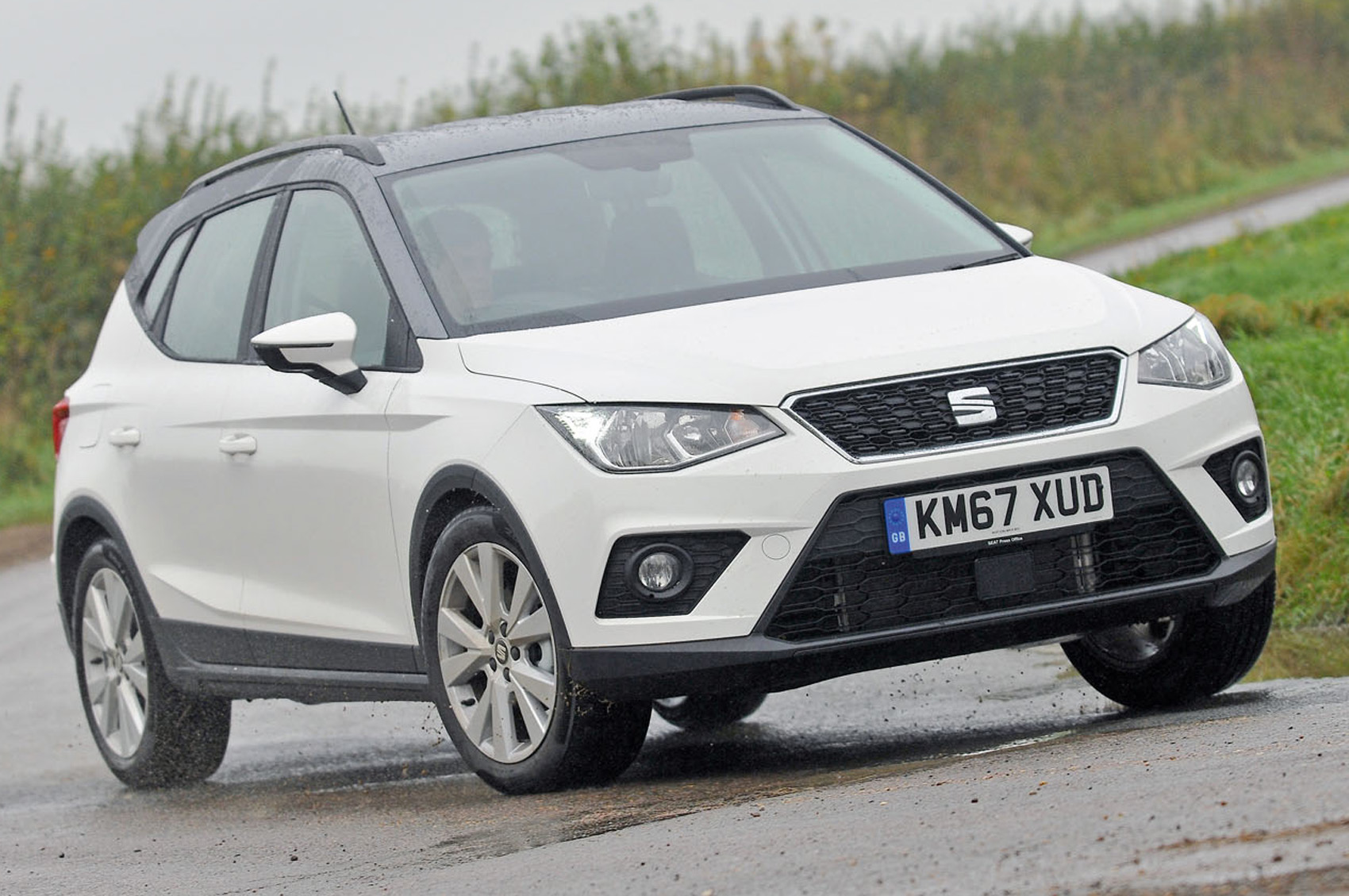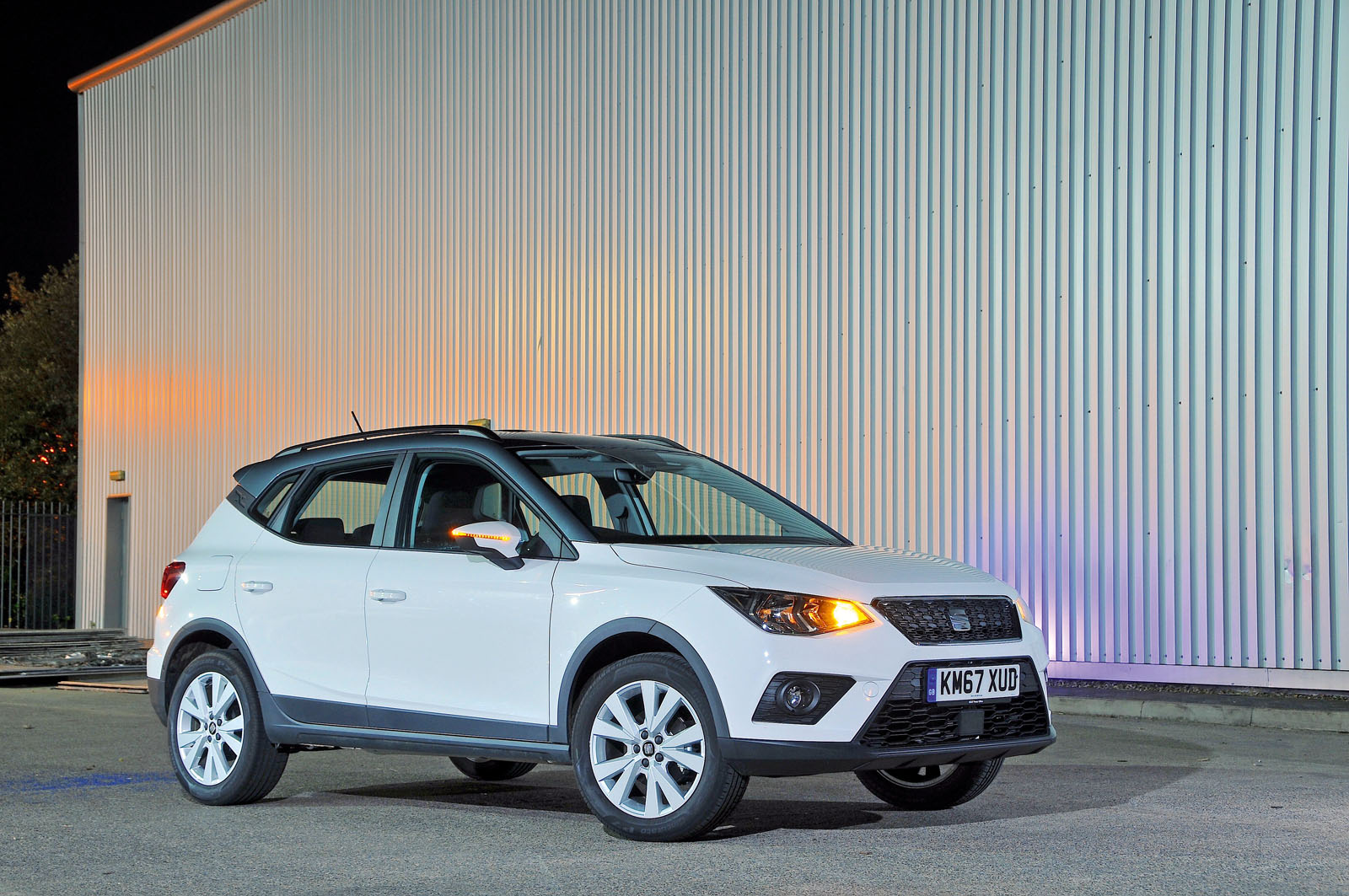The Seat Arona – dainty of footprint, despite its SUV pretensions – surprises in the same way that the Volkswagen Volkswagen Up does, which is to say that it’s much more capacious than you’re expecting.
Even with a 6ft 1in road tester in the driver’s seat, there is comfortably enough space for a similarly tall person to sit behind, and head room extends seemingly endlessly, although you’d need the body of a contortionist to squeeze into the middle berth in the rear with adults sat either side of it.
Boot space, meanwhile, is certainly impressive and there’s a height-adjustable floor to ease the ingress of awkward loads.
Once you’re behind the wheel, you’ll be genuinely surprised by very little. The driving position is comfortable, if a little upright and lacking a touch in steering-wheel adjustability, and you enjoy excellent visibility through the Arona’s unusually upright windscreen.
The chiselled dashboard and smart Germanic switchgear are lifted from the Seat Ibiza and make for an attractive if somewhat uninspiring environment that’s at odds with those of French rivals such as the Citroen C3 Aircross.
The entry-level SE Arona gets a 5.0in touchscreen, although upgrading to SE Technology trim — as tested here — introduces a rather elegant 8.0in alternative (with factory navigation) that gives the cabin a lift, but it's still a business-like and functional, if unerringly neat, interior.
The upgraded system is called Media System Plus and gives you DAB radio with Full Link capability (MirrorLink, Apple CarPlay and Google Android Auto), voice control functionality, two USB inputs and both 3.5mm minijack aux-in and SD card inputs. It’s ostensibly the same system as in top-of-the-range models but for the omission of a reversing camera.
The resolution is as crisp as you’d ever want and latency has been chased out almost entirely, with the screen responding to inputs without any hesitation. The display avoids looking cluttered by displaying secondary menu options only when it senses your hand approaching.
The SE Technology trim also has a wireless phone-charging pad – indispensable once you’re accustomed to using it.
Some physical switchgear remains, which we like because it allows the driver to make adjustments to volume or zoom in on the navigation quickly and safely while on the move.
Stepping up to SE Technology Lux swaps the speakers for a Beats-branded system, adds keyless entry and ignition, adaptive cruise control and Seat's Winter pack.
The FR trim includes 17in alloys, chrome exterior trim, electrically adjustable and heated door mirrors colour-matched to the roof, tinted rear windows and twin exhaust pipes to the exterior, along with FR sports seats, ambient lighting, a flat-bottomed steering wheel and Seat's Climatronic climate control system.
Xcellence trim loses the FR's customisable drive modes, but adds blind spot detection and rear cross traffic alerts. Top-spec Xcellence Lux Aronas gets those drive modes back, and gains a rear view camera and semi-automated park assist.
It’s possible to have an extremely well-equipped Arona although, given that it would be north of £20,000, you’d have to be committed to this size of car rather than opting for a larger model.
Fixings don’t exactly mimic the solidity of oak, as they do in more senior Volkswagen Group cars, but build quality is certainly a notch above the likes of the Kia Kia Stonic and the Renault Captur and gives no cause for complaint.


